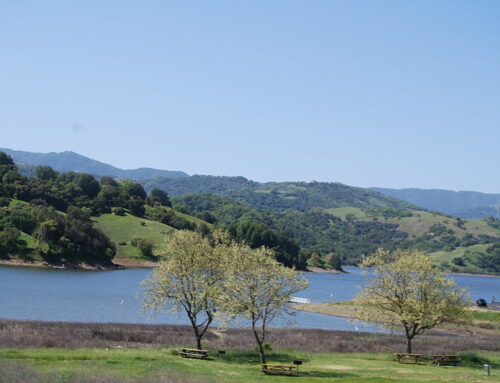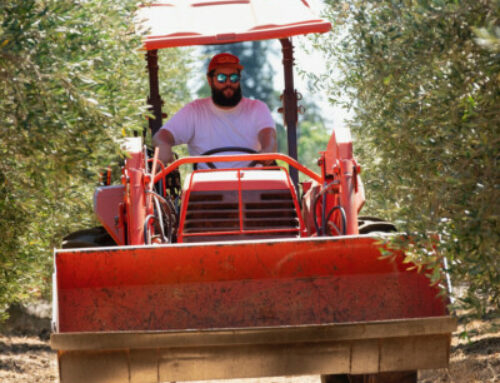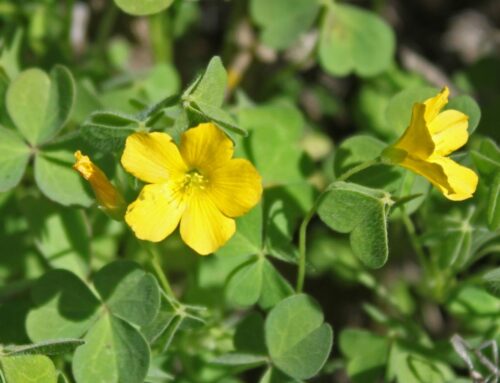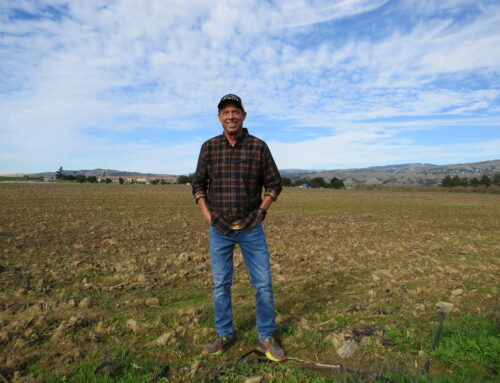Keep plants free of dust to help eliminate habitat for spider mites.
![]()
By Sharon McCray
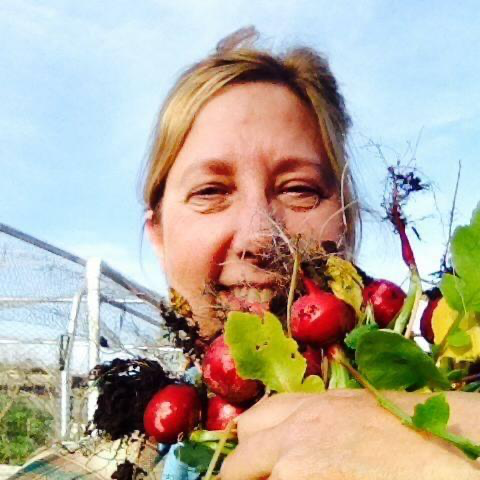
Sharon McCray
As winter fast approaches, it’s time to get everything in order so when it finally does arrive, the garden is ready for whatever it brings.
First things first: Take an inventory — what is happening? Does it feel like fall yet? False falls and springs have tormented gardeners for centuries. Here are some simple yet practical ideas to get your garden ready to survive winter in Northern California — whatever that brings.
Clean Up
Remember fungus and insects hide over the winter in decaying organic material, so make sure your garden stays cleaned up. Put leaves in the compost pile and keep the lawn and garden beds clear of debris and weeds.
Fertilizer
Fertilizers containing higher percentages of phosphorus and potash help plants recover faster from freezes. Winter crops use more of these nutrients. It is best not to fertilize anything after November, with the exception of winter plants and certain stone fruits.
Lawns
Thatch and aerate if needed. Fall is the best time to re-do lawns or plant new ones. It is also a good opportunity to eliminate grass altogether and replace it with mulch and/or drought tolerant plants. Fertilize cool season lawns or plant perennial rye seed in existing warm season lawn for instant green all winter long. Other cool season grasses include tall and red fescue along with Kentucky bluegrass. A blend of both warm and cool seasons will provide good all year around green. Warm season grasses include Bermuda, St. Augustine and buffalo grass.
Fruit for next year’s crop was determined shortly after the last harvest. Trees are taking up nutrients now for next year’s growth and regular watering will encourage fruit production. Remove the mummies from fruit and nut trees along with any leaf debris. Clean up under the trees. Fertilize pear and plums. Deep water citrus and all fruit trees. The Master Gardeners have a free online fruit tree calendar that is very useful and can be found at MasterGardeners.org.
Roses
Prune lightly for shape and to control diseases. Roses grown in more severe winter climates appreciate a hard prune and mulch cover on roots but not in Santa Clara County. Do not feed roses now as they need to rest.
Vegetables
 Winter crops seeded now will be ready to put into the ground in about six weeks. Direct sow lettuce, spinach and peas in succession to allow for a longer harvest. Purchasing starts from your local nursery will give a head start on food production.
Winter crops seeded now will be ready to put into the ground in about six weeks. Direct sow lettuce, spinach and peas in succession to allow for a longer harvest. Purchasing starts from your local nursery will give a head start on food production.
Perennials
Divide and cut back. It is not recommended that perennials be disturbed when they are in flower and cutting back in the winter will encourage more blossoms in the spring.
Ornamentals
Thin camellias for larger flowers this winter and spring. Keep plants free of dust to help eliminate habitat for spider mites.
Tools
Disinfect tools using household cleaners containing bleach or Lysol. A 10 percent bleach solution is recommended. To clean shovels and other large tools, fill a bucket with sand and mix in some used kitchen oil. Inserting tools into the bucket will help remove dirt and provide a rust barrier.
Weed Control
Use a pre-emergent such as corn gluten. Beware it will keep all seeds from germinating — including flowers and vegetables. If laying down mulch, place a few pieces of newspaper or cardboard underneath. It’s not too late to plant daffodils or other bulbs.
Sharon McCray is a California native living in Santa Clara County since 1959. She became certified as a University of California cooperative extension master gardener in 1992 and a UCCE master naturalist in 2015. She hosts a monthly radio show on KKUP public radio and is now retired.



